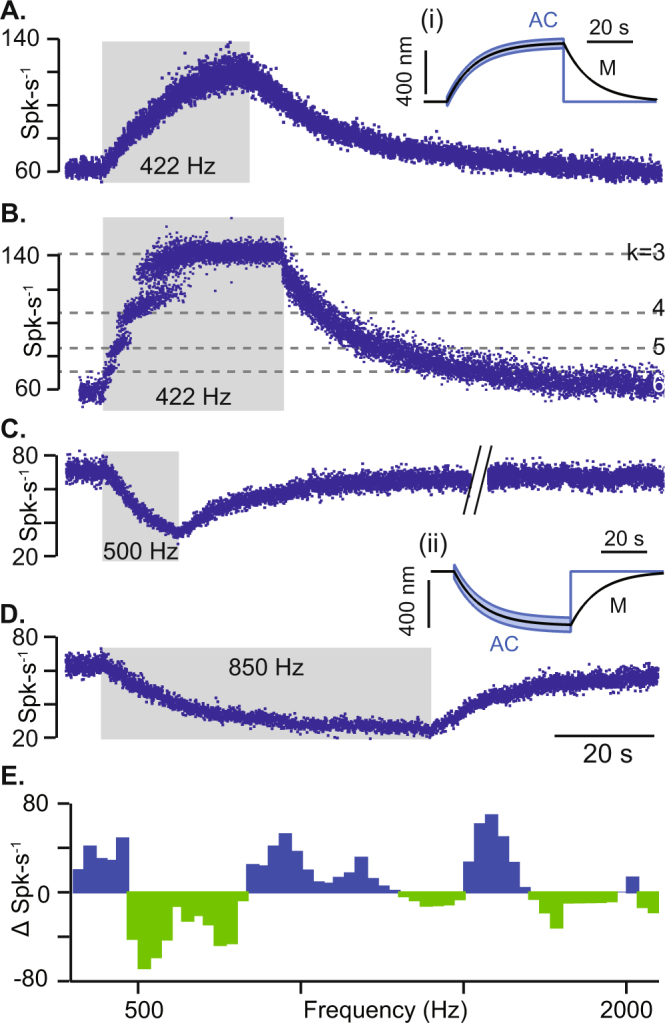Figure 4.

Sustained responses of regularly-discharging afferent neurons in an animal model of canal dehiscence. Regularly discharging afferents responded with sustained increases or decreases in background action potential firing rate that was stimulus frequency-dependent (average CV for these units was 0.05 +/− 0.008 responding with vector strength 0.34 +/− 0.25). (A–E) show different lateral canal units in the same animal as Fig. 3. (A–B) Afferents slowly increased firing rate in response to a 422 Hz stimulus and recover after stimulus. (B) This afferent also exhibited phase-locking at decreasing winding ratios k = 6,5,4,3 during beginning of stimulus followed by a sustained increase in firing rate. (C,D) Afferents slowly decreased their firing rate in response to 500 Hz and 850 Hz stimulation,. The average recovery time constant of these units after cessation of the auditory frequency stimulus was 15.04 +/− 1.14 s. (E) The change in firing rate of an example regularly-discharging afferent shown as a function of stimulus frequency. (i-ii) Cupula displacement calculated from the 1-D human canal mathematical model where black is the mechanical cupula volume displacement (M) responsible for sustained responses, blue is the cycle-by-cycle cupula vibration at the stimulus frequency (AC) responsible for phase-locked responses.
